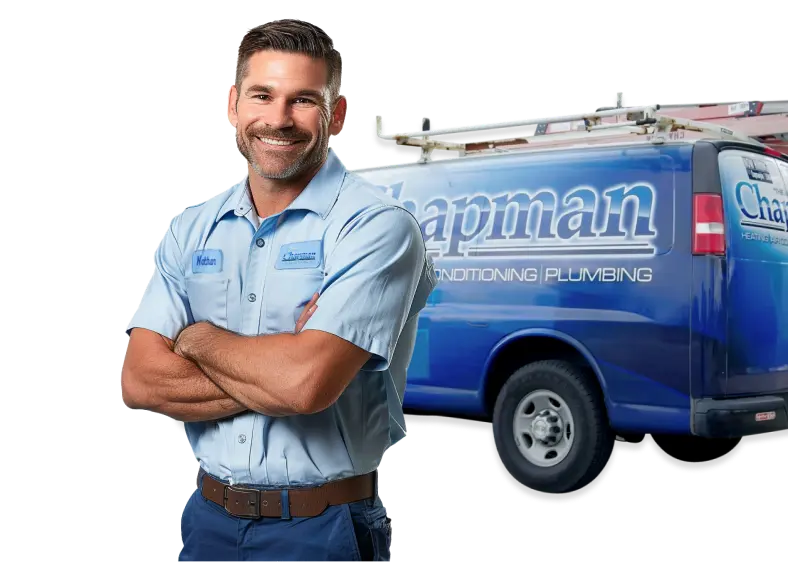Throughout the year in Indianapolis and across Central Indiana, the temperature will fluctuate from hot and humid in the summer to frigid and below-freezing in the winter. If you’re constantly adjusting and cranking the temperature on your thermostat, it will lead to higher-than-expected utility bills and overall frustration and discomfort.
Finding ways to keep your house cool in the summer and warm in the winter will help you deal with the extremes, but it’s still important to know the best temperature for your home.
There is a lot of conflicting information out there about the best thermostat setting for winter and summer that will keep you comfortable and lower your electricity bill. One of the best and most trusted sources of information regarding the proper thermostat settings is the U.S. Department of Energy (DOE).
Keep reading to learn more about what temperature to set the thermostat at for every season.
Recommended Thermostat Settings in the Winter
Although the wind chill might make it frigid outside, it should not be cold inside your house. Even if the temperature drops to single digits, you can rely on your furnace or other heating system to keep your home comfortable.
In the winter, the DOE recommends keeping your thermostat at 68 degrees Fahrenheit while you are awake and at your house. This temperature not only keeps your house warm but should also help prevent your pipes from freezing.
However, to help save money and be more energy efficient, it’s an option to adjust the temperature depending on where you are and what you’re doing. Specifically, the DOE suggests turning the temperature on the thermostat down while you're sleeping or out of the house.
Even by lowering the thermostat by seven to ten degrees for eight hours a day, you can see up to a ten percent decrease in your annual heating expenses. This figures out to be as much as one percent for each degree lowered.
It’s important to remember that percentage change goes both ways. If you’re freezing in your house when the thermostat is set to 68 degrees Fahrenheit, you can expect a one percent increase in your heating bill.
Recommended Thermostat Temperatures for the Summer
Summers in Indiana can be brutally hot. But, like your heat, you should hesitate before cranking your air conditioner to try to cool your house down faster. This will only waste energy and put extra stress on your appliances, which over time, can decrease its operational efficiency. Plus, it’s not proven to be effective in cooling your home down any faster.
During the summer, the biggest challenge is finding the right temperature that balances your comfort with saving money and energy.
That is why the DOE recommends setting your thermostat to 78 degrees Fahrenheit when you are home during the summer. While this might make your house a little warmer than you're used to, it does help reduce the cost of your energy bill significantly.
When you leave during the summer, do not be afraid to crank up your thermostat setting between 85 to 88 degrees Fahrenheit. The DOE estimates this can help you save as much as ten percent on cooling costs annually.
Recommended Thermostat Settings for Spring and Fall
During the fall and spring, you’re less likely to experience the extreme temperatures and conditions associated with winter and summer. However, the weather can still be unpredictable, which can make setting your thermostat a little tricky.
If you have a programmable thermostat, we recommend the following thermostat settings during the spring and fall:
- During warmer periods, set the thermostat to 78 degrees during the day, and 86 degrees if you leave the house.
- During cooler times, set the thermostat to 68 degrees while you’re at home and awake, but lower it to 65 degrees when you’re asleep. You can even lower it further to 60 degrees when you leave the house.
Even with a programmable thermostat, it is best to place the device on “auto” mode during the spring and fall. This allows you to set the desired temperature as the weather changes and makes it easier to lower your energy bill.
Why You Should Adjust the Temperature When You Leave the House
One of the keys to maintaining a comfortable temperature in your home while saving money and being energy efficient is to lower the temperature on the thermostat when you leave the house.
Our team of HVAC professionals recommends the “8 is Great” rule, which states:
Adjust your temperature by eight degrees when you know you’re leaving the house for at least two hours. For example, if your thermostat is set at 68 degrees Fahrenheit while at home during the winter, turn it down to 60 degrees Fahrenheit before heading out to work, school, or running errands.
Some people find it difficult to remember to adjust the thermostat as they’re running out the door. Others forget to turn it back once they arrive home and soon find themselves freezing or sweating.
This is where a programmable thermostat comes in handy. It allows you to automate the process. With a programmable thermostat, you have the ability to just set the times and temperature settings you want without having to think about it ever again. This is especially helpful if you have a set schedule.
For example, you leave the house for work every day at 8:00 a.m. and return by 5:00 p.m. You can program the thermostat to adjust during the hours you are away while ensuring it’s back to your preferred temperature before you get back home.
Whether it’s learning the best temperature settings, or which programmable thermostat is right for you, Chapman Heating, Air Conditioning & Plumbing is here to help. Contact us today to learn more about your home’s heating and cooling system so you can stay comfortable no matter the season.
With a “3-season room,” you have the perfect place to enjoy the beauty of the great outdoors with your loved ones.
In the spring and summer, you can sit out with a book or open up a few of the windows to enjoy the breeze. You can watch the beauty of a thunderstorm while staying safe and dry. Then, in the fall, you can sit with a sweater and a cup of coffee and watch the leaves change colors.
However, one of the most challenging parts of maintaining your three-season room is controlling the temperature.
Without insulation, your room is just about useless in the winter. The cold may be too intense for you to stand without bundling up too much. In the summer, you may not want to open the windows because of allergies or the extreme heat. Even in the spring and fall, the fluctuating temperatures can make it difficult to maintain comfort.
Enter a ductless mini-split system. Sometimes called a ductless heating and cooling system, mini splits are the perfect answer for maintaining the temperature and comfort of your three-season room. You can almost turn your three-season room into a four-season room.
What Is a Ductless Mini Split System?
These versatile systems offer flexible heating and cooling options for individual rooms in your home, including your three-season room.
A ductless mini-split is made up of two main pieces:
- The outdoor compressor, which includes a condensing coil.
- An indoor air-handling unit, which is typically mounted on a wall.
Other than a three-season room, you’ll also find mini splits are common in garages, master bedrooms, and room additions. Like regular AC and heating systems, ductless systems need regular maintenance and service.
What Are the Benefits of a Ductless Mini Split?
There are a few benefits to having mini-splits installed in your home. A few of these are outlined below.
They Always Keep the Perfect Temperature
As the name implies, mini splits are completely independent heating and cooling systems from the rest of your home. This unique setup allows for total control and finding the perfect temperature.
A little hot in the summer? Crank up the cooling. Chilly fall evening, but still want to enjoy the outdoors? Turn on the heater. This control even gives you the ability to spend some comfortable winter afternoons in your three-season room.
They Are Cost-Effective and Energy-Efficient
Since the mini-split is controlled separately and only when you want it, you don’t have to worry about the mini-split driving up your energy bill.
Instead of cranking the central AC in hopes of cooling off the room and draining the cool air in the house, just fire up the mini-split as you need it.
They Are Quiet While in Use
A mini-split is not like a normal fan that is constantly whirring. After all, you want to enjoy your three-season room in peace and quiet without the constant, loud buzzing of a fan.
A ductless mini-split is relatively quiet and will provide that sense of tranquility you want. It is also small, compact, and on the wall. That means no maneuvering around a bulky box fan or tripping over cords.
They Are Easy to Install
Another benefit of using a mini-split in your three-season room is how easy the installation process is. With traditional heating and cooling systems, extensive ductwork and space-consuming central units are required.
Ductless mini-split systems, on the other hand, only have a few components (outdoor unit, indoor unit, and conduit that connects them). Overall, this saves homeowners time, money, and hassle during installation.
They Improve Air Quality
Not only do these systems provide cost-effective temperature control, but they also help improve the air quality in your Indianapolis home. Since there is no ductwork that can become clogged and dirty over time, there is a smaller chance of dust, allergens, or other debris accumulating inside the ducts and causing respiratory issues.
Plus, many ductless mini-split systems have air filtration systems that can trap and remove harmful particles from the air, such as dust, mold, and bacteria.
Ready to upgrade your three-season room or thinking about putting one in in time for summer? Take advantage of the temperature comfort and control that only a ductless mini split can provide.
Call your friends at Chapman to help get the installation process started. We carry top-of-the-line heating and cooling products built to battle the extreme and spastic Indiana heat and cold.
Air conditioners work hard to keep your home cool and comfortable as the temperature outside warms up. This hard work can really take a toll on your unit and results in wear and tear on the unit. Most issues can be identified with a yearly spring clean and check, but what happens when the unit is a little too far gone? How do you know when it's more cost efficient to buy new than it would be to repair? Here are some tips to help you decide whether to replace or repair.
Cost Difference
The first thing you should consider is the cost of the repair. If the cost difference is small, it's time to look for newer, more efficient units that will save you money in energy costs in the long run.
Age of the unit
This decision is a fairly easy one if the unit is old, inefficient and expensive to repair, but if the unit is new this becomes a more difficult decision. Weighing your options, consider how long you have had the unit, the cost of the repair and the amount of value you have gotten from the unit and the projected value you still have left to gain.
Faulty Systems
If your unit has been causing headaches from the beginning, it is time to replace. Costly repair after repair won't lead to anything but frustration and wasted money. Your best option in this situation is scraping your faulty unit and investing in a reliable, efficient system that comes with a scheduled maintenance clean and check to make sure all systems are a go.
Energy Star Efficiency
If you do decide to purchase a new unit, consider its energy star rating and make sure the unit will be a reliable one. For any questions about your AC repair, give Chapman a call and schedule a few quote for air conditioner issues.
Keep an eye on the costs typical for running your HVAC unit. Factor in repairs, energy bills and age of the unit to decide if it is time to upgrade. Ultimately, your unit should be making your home comfortable, if some rooms in the home are too hot or too cold, that is an obvious sign your unit is not working properly and needs some attention.
Have a qualified Chapman Heating, Air Conditioning, and Plumbing, come to your home today to inspect and replace your air filters and to provided home ac repair
For the past several years, the federal government has been encouraging Americans to buy new, energy efficient furnaces, heat pumps, air conditioners and other HVAC equipment. But as more and more folks upgraded their systems, the need for the tax credits was reduced with every passing year. Now, in 2014, the Energy Efficiency tax credits have been eliminated. This move is expected to save the government $700 million over the next several years, but what about you? You want to save money too. So with these tax credits expiring, what's the best way to get the most HVAC bang for your buck?
First, don't be pennywise and pound foolish. When it comes to HVAC equipment, that means purchasing used equipment or having a friend or family member install your system for you. While you might pay less to begin with, it's almost certain the job won't be done properly or the new system will fail the first time you hit a hard freeze. Make sure you're working with a reputable Indianapolis heating and cooling company like us.
Next, make sure you aren't buying more system than you actually need. Sometimes, bigger is better, but when it comes to your HVAC system, a bigger unit can actually wind up costing you a bundle. Not only is the unit more expensive to buy in the first place, it's also more expensive to operate. The bigger unit takes longer to reach its peak efficiency and makes it more difficult to dehumidify the air. That means the air feels warmer, so in the summer, you'll often find yourself cranking the thermostat down to get the same cooling effect, which results in bigger energy bills. It's a mess. The solution is simple: work with a qualified HVAC tech to find the right unit size for you.
Also don't be afraid to see if you can save with rebates from the manufacturer of your furnace or air conditioner. Depending on what you purchase, you could save up to hundreds of dollars on your system. That's better than most of the expired tax credits.
Even without the tax credits, this is still a great time to invest in a new furnace or air conditioner. The increased efficiency and comfort of today's systems will blow you away if you've been muddling through with old equipment. Ready to get started? Contact Chapman Heating and Air today.
Give Chapman Heating, Air Conditioning, and Plumbing, to provide air conditioning services for your home today






